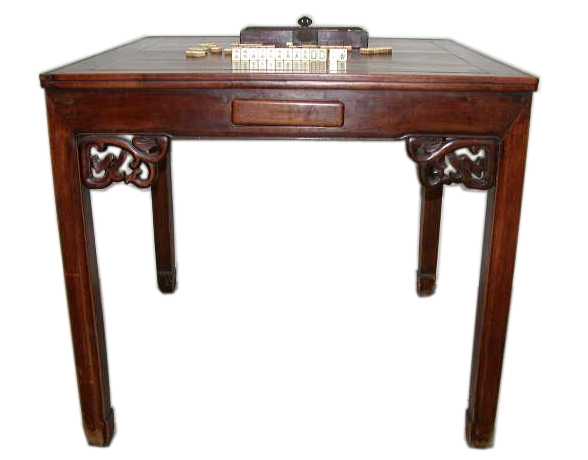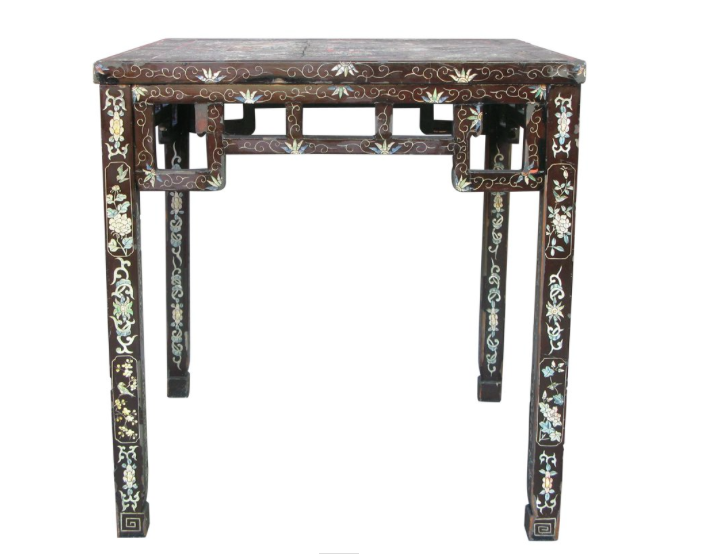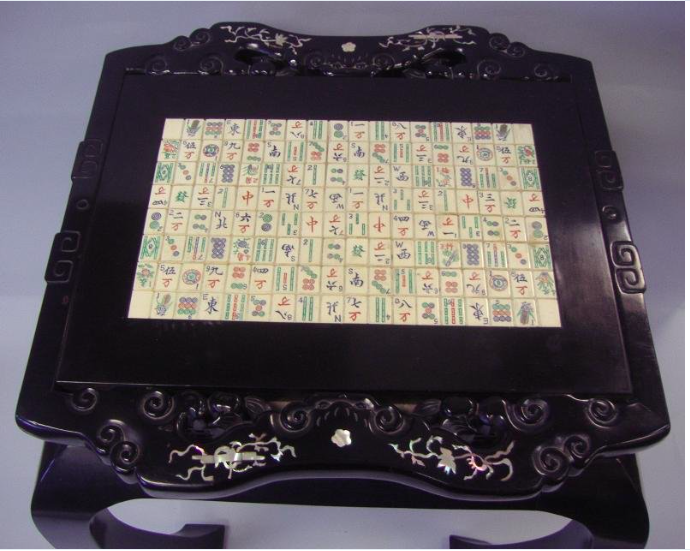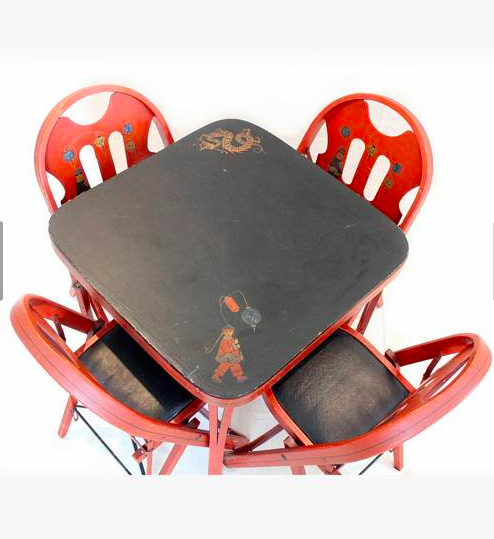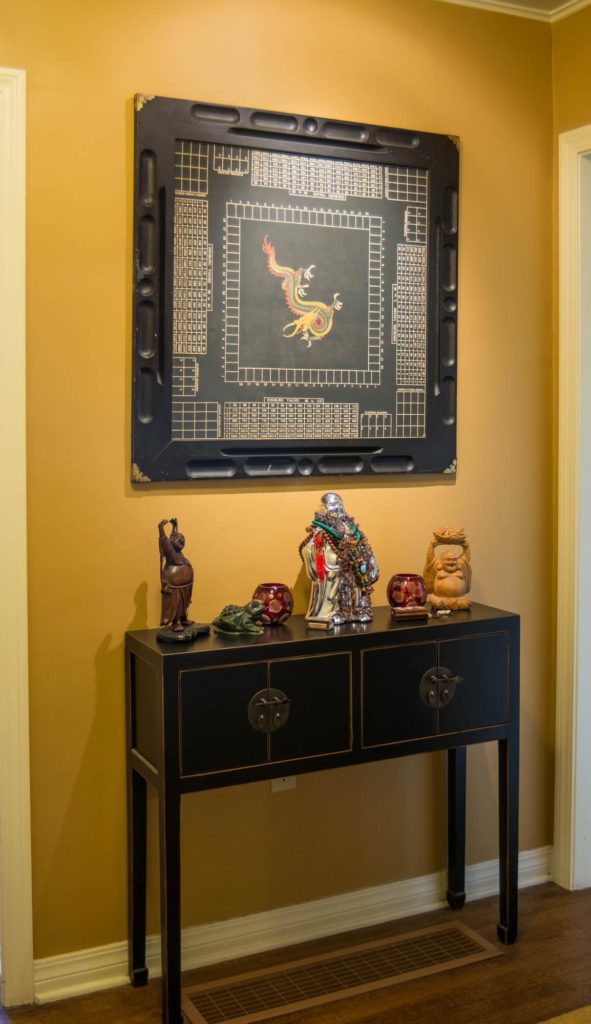Those of us who play the game love the activity itself. But some of us like to set the scene by having a beautiful table. And, you know, it does make a difference: playing on a lovely table adds to the enjoyment of the game.
Some tables are antiques, and skillfully carved. The drawer you see in the middle can hold the player's winnings.
Some tables have carving and incredible inlay, such as this one. Notice the different colors used for the inlay. Although this is called a mahjong table, I doubt it was designed for playing the game. It lacks some of the drawers one often sees on special MJ tables.
Here's the top of the table. I don't know about you, but I would have a hard time concentrating on my tiles if I were playing on this beauty!
Some people have taken their affection for the game and inserted their beloved tiles into a tabletop. It certainly would be impossible to play on this table! I'd guess this is used as a side table or coffee table.
There are other fun tables, such as this one on etsy:
Isn't this adorable?
And then we have a table that is a work of art, beautifully painted, and that's practical for learning how to play:
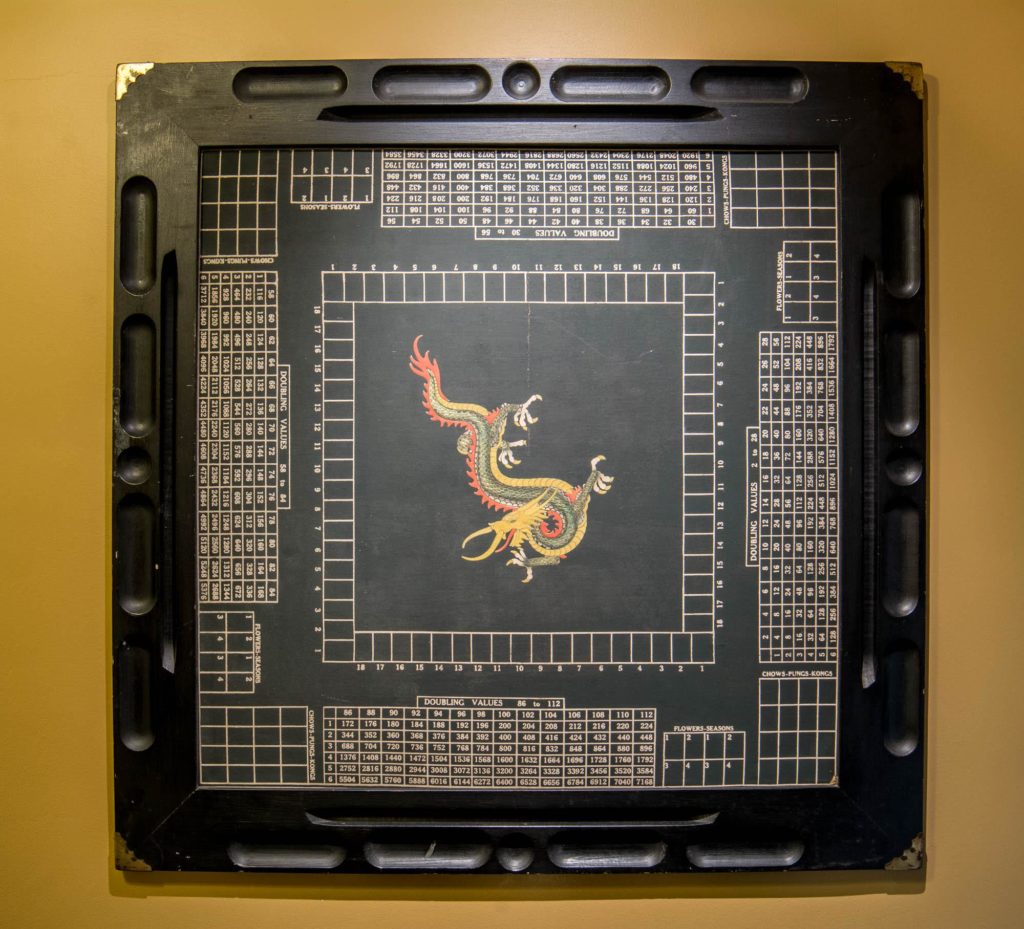
Look carefully at this beauty. (If you click the photo you will get a better close up.) You will see a rack to lean the tiles against, just above those oval shaped indentations intended for the long bone counters used in the early days for keeping score. I guess those round indentations are to hold the dice. Scoring the game, which was quite complicated back in the days, became a lot easier with all the scoring information around the outside edges. Flower tiles, used as bonus tiles, could be placed in little squares on the sides (see lower right.) Your exposures: Chows, Pungs and Kongs, go in the little boxes further to the right. (BTW: in some versions of the game, a run of tiles is called a Chow.)
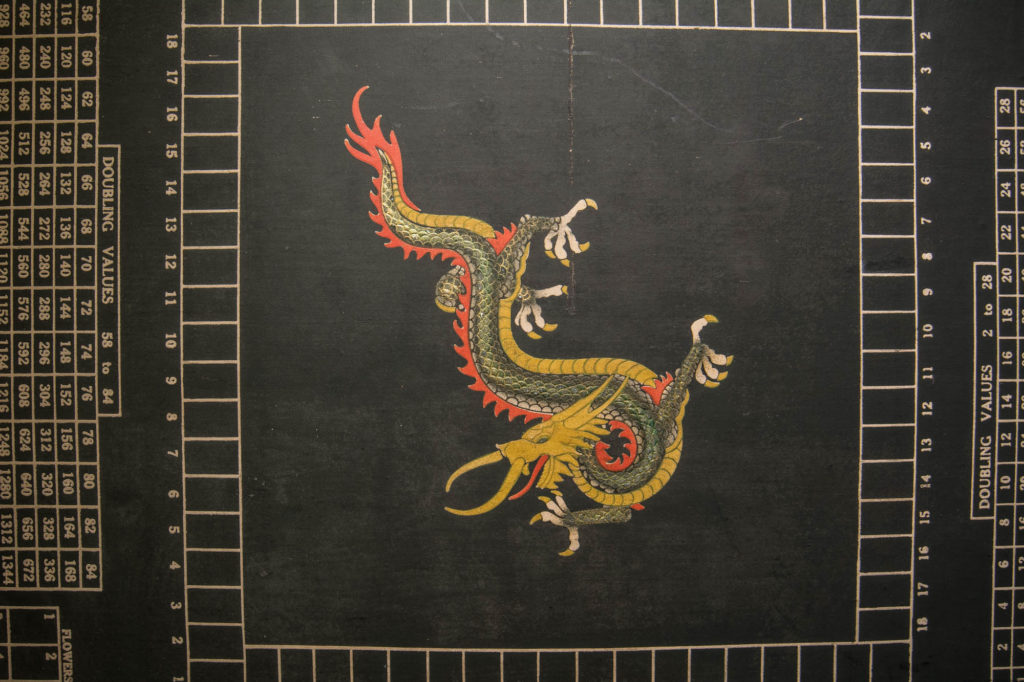
The center dragon is fabulous. This table was made for Chinese play, or at least for the variation of game that only needs 18 tiles per wall. Notice how the rectangles around the edges of the center of the table tell players where to place their tiles.
Lucky owner Rod Limke has this beauty where it can be admired:
How wonderful is this?!

